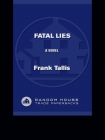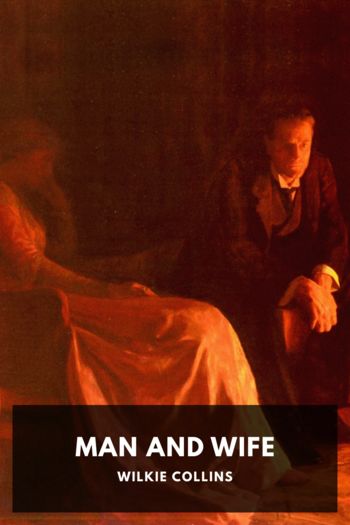Fatal Lies Frank Tallis (best fiction books to read txt) 📖

- Author: Frank Tallis
Book online «Fatal Lies Frank Tallis (best fiction books to read txt) 📖». Author Frank Tallis
The professor leaned back in his chair, satisfied with the joke's effect on his young disciple: a counterfeit grimace and the ignition of a bright light in Liebermann's eyes.
“Last year, you said you were thinking about writing a book on jokes,” said Liebermann. “Is that still your intention?”
“In actual fact,” said Freud, “I've been tinkering with the joke book for some time—but progress has been slow. I've been simultaneously engaged on another project: a collection of essays on sexuality, which, I believe, may prove to be of much greater significance. Even so, I keep finding myself returning to the joke book.” He paused and puffed on his dying cigar. “Yes, there is much to be learned from a close examination of jokes. Psychoanalysis has demonstrated— beyond doubt—that we should not underestimate small indications. It is by close observation of phenomena that have hitherto been supposed trivial, such as dreams, blunders—and yes, jokes—that we are afforded our greatest insights.”
The professor assumed a more serious expression: “The other day, I read something in the Freie Presse.… One of the mayor's associates had made a joke about Jews who wished to convert. He said that when being baptized, they should be held under water for at least ten minutes.” Freud smiled, wryly. “Not a bad joke, all things considered… but so very revealing! It would seem that primitive urges— forbidden satisfaction by the prohibitions of civilized society and thus repressed—ultimately find expression in the content of jokes. So it is that our jokes betray us, revealing, as they do, our shameful desires and, in the case of the mayor's associate, a murderous impulse.”
Liebermann recognized that this same reasoning could be applied to Freud himself. Such a clear understanding of the dark underpinnings of humor strongly suggested to him that Freud (a Jewish man who had been collecting Jewish jokes for many years—many of which were anti-Semitic) must be ambivalent about his own racial origins. Such ambivalence was not uncommon among assimilated Jews. Indeed, Liebermann reflected, his own feelings were plainly mixed. He was often embarrassed by the appearance of a caftan on the Ringstrasse, or the Yiddisher pleadings of an impecunious pedlar.
Liebermann noticed that Freud's attention had been captured by the ancient statuettes on his desk, in particular by a small female figure of pale orange clay. She was standing with her weight on her right leg, her head turned to the side, and a mantle was drawn over her loose gown. In her left hand she held a fan, and her hair was drawn back and tied into a bun beneath a conical sun hat.
Freud suddenly looked up. His expression had softened and he had a look that Liebermann had only ever seen on the face of a proud parent—a moist-eyed muted pride.
“Greek,” said Freud. “Hellenistic Period—believed to be from Tanagra, 330-250 B.C.“
Although Liebermann did not usually share Freud's love of ancient artifacts, being a great enthusiast for all things modern, he did see considerable aesthetic virtue in this particular figure: its poise, its natural and unaffected elegance.
“Charming,” said Liebermann. “Quite charming.”
Freud broke out of his reverie and offered Liebermann another cigar. The young doctor declined and, seizing the opportunity to change the subject, raised the book that he had been patiently nursing on his lap.
“Have you ever seen one of these?”
He handed the volume to Freud, who, looking rather puzzled, replied, “No.… What is it?”
“A klecksography book,” said Liebermann. “It's a kind of game, for children.”
Freud flicked it open and examined the symmetrical patterns.
“The inkblots,” Liebermann continued, “are usually accompanied by verses, which serve to guide the imagination—the idea being to look at the inkblot until what is being described appears. Such books are based on an original by Justinus Kerner—a physician and poet from Ludwigsburg. It occurred to me that this principle might be used to discover the contents of the unconscious. If inkblots are presented without any verses, then whatever the viewer claims to see must reflect—to some extent—a projection from his own mind. After all, there is nothing really there.”
Freud hummed and said, “Interesting.… It is such a simple task that defenses might be relaxed, resulting in the inadvertent escape of repressed material.” He lifted the delightful figurine from her place between a terra-cotta Sphinx and a bronze Egyptian deity and began to stroke the inanimate object as if it were a pet. “Repressed material that might subsequently be subject to a psychoanalytic interpretation.”
“Indeed,” said Liebermann, enlivened by the positive response of his mentor. “If an observer were to see two wrestling men in an inkblot, rather than an exotic flower, this might indicate the presence of an underlying hostile impulse—not unlike the latent aggression you have identified in jokes. The procedure, however, is not without precedent. I undertook some research at the university library and discovered that Binet has already recommended the use of inkblots to study what he calls involuntary imagination. So I cannot lay claim to having discovered anything original.”
“When walking in the Alps,” Freud responded dreamily,





Comments (0)